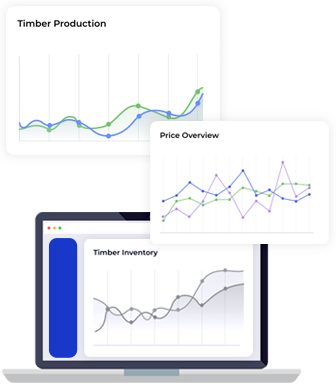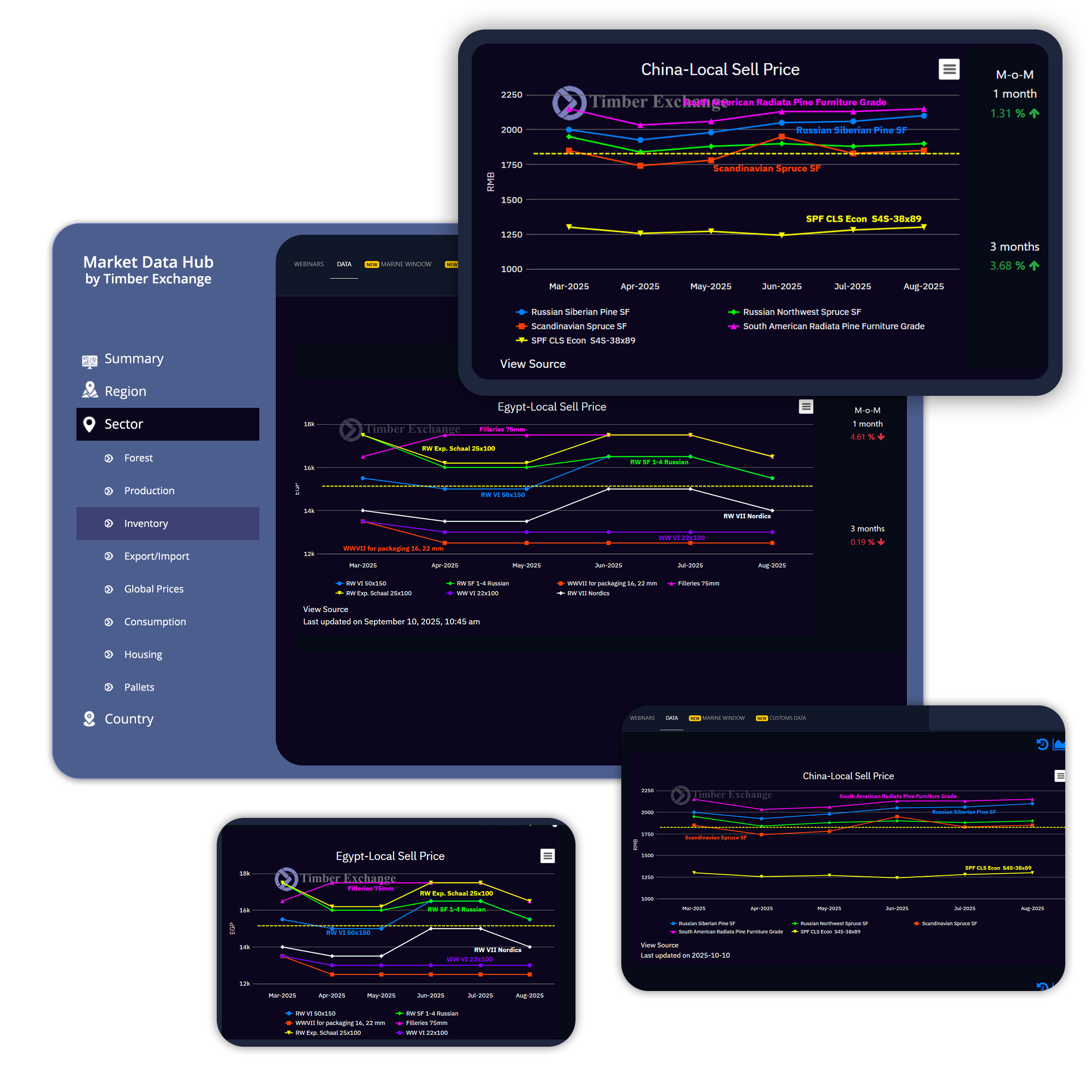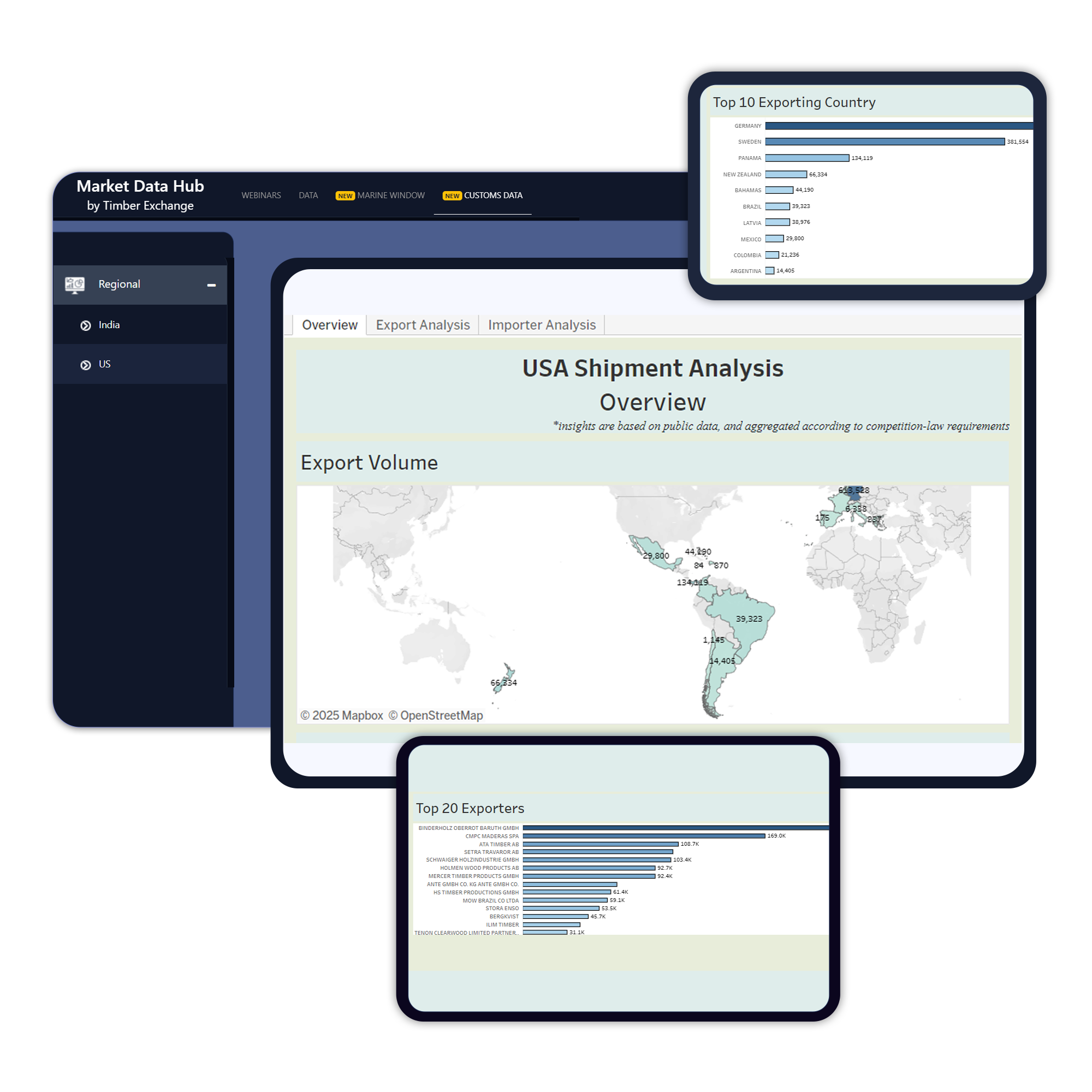
Top Global Timber Market Updates #2
Posted on August 6, 2024 |
The global timber market continues to experience shifts driven by changes in demand, raw material costs, and geopolitical factors. Staying informed about these trends is key to navigating the evolving landscape. Here are the latest updates:
-Brazil: Brazil is projected to receive US$18 billion in investments in its forestry sector by 2028. This substantial investment is expected to boost production and enhance sustainable practices in the industry.
-Canada: The ongoing wildfires in British Columbia are expected to disrupt timber operations and likely lead to increased timber prices due to supply chain interruptions and damaged resources.
-Finland: Finland's softwood lumber exports totalled about 2.90 million cubic meters in the first five months of 2024, a 19% decrease from the same period in 2023. The decrease was observed in all key markets except Asia.
-Russia: Russia's sawn timber exports to Turkey have tripled since the beginning of 2024. This surge is linked to strategic shifts in trade relations and increased demand from Turkey.
-Sweden: In the first five months of 2024, Sweden exported approximately 5.18 million cubic meters of sawn and planned softwood lumber, marking a 10% decrease compared to the same period in 2023. This decline is largely due to reduced demand in key markets.
-UK: UK pallet manufacturers are facing significant increases in raw material costs. The Timber Packaging & Pallet Confederation (TIMCON) noted that these rising costs are impacting production and profitability.
-US: Future lumber prices in the US have continued to fall due to a weak construction market, driven by housing affordability issues and post-pandemic economic adjustments. Prices reached new lows in recent weeks.
As the timber market continues to evolve, staying updated on the latest trends is essential. What changes are you observing in your region? Share your insights, and let’s continue the conversation!
To learn more about such news, subscribe to our newsletter today. For in-depth analysis of real-time data related to the global timber market, subscribe to our Market Data Hub.





